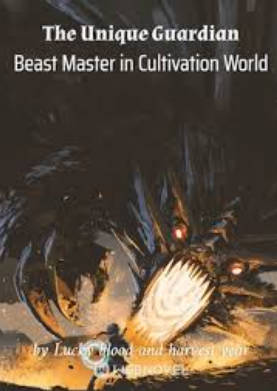Chapter 459: critical news
In the end, the Eurasian Semiconductor Group's chip project was taken down by Xinwu with the most favorable policy and great sincerity they could come up with.
Next, the original Hynix manufacturing base will be expanded. Initially, Xinwu approved 55 hectares of land for the Hynix project, and the current Hynix Plant 1 uses 38 hectares of it.
In Hynix's expansion plan, the area of the second factory is larger than that of the first factory, so the other party has approved an adjacent 25 hectares of land for them, so that the area of the entire Hynix manufacturing base will reach 80 hectares.
In addition, Eurasia Semiconductor Group will also obtain more than 100 hectares of land approved by the local government not far away to directly establish the Eurasian Semiconductor Xinwu manufacturing base. The scale here is even larger than that of the Hynix base. This time, semiconductors will re-produce all the obsolete production lines in the United States and Europe.
Speaking of which, it is necessary to briefly introduce the concept of chip manufacturing, fab specifications and chip manufacturing process.
In fact, what we call a chip is actually an integrated circuit, which consists of transistors that are subdivided on silicon crystals.
Generally speaking, a 6-inch, 8-inch or 12-inch fab refers to the diameter of the wafer, which can also be understood as the size.
Silicon is refined from quartz sand, and wafers are purified from silicon.
Then, these pure silicon are made into silicon crystal rods, which become the materials for the manufacture of quartz semiconductors in integrated circuits. After photoengraving, grinding, polishing, slicing and other procedures, the polysilicon is melted and pulled out of the single crystal silicon crystal rods, and then cut into pieces. thin wafers.
Therefore, depending on the process, these fabs can produce wafers with diameters of 6 inches, 8 inches and 12 inches.
The process of the chip, simply understood, is the accuracy of the distance between the transistors distributed on the chip. The current process can reach 22 nanometers, but in a few years, the process accuracy of 14 nanometers, 5 nanometers or even 1 nanometer will appear.
Therefore, the larger the wafer diameter and the smaller the distance between transistors, the more the number of dies integrated on a single wafer, that is, the higher the degree of integration, not only higher computing efficiency, but also lower energy consumption .
Therefore, the wafer size of the chip industry is getting bigger and bigger, the manufacturing process is getting smaller and smaller, and the technology is getting more and more complicated.
It's just that because of the technology blockade, Huaguo's development in chips has been very slow. Not to mention now, even ten years later, Huaguo's fabs will not be able to see the 12-inch output ranking at all, and only 8-inch ones will be seen. Huaxin International entered the top ten, with output accounting for less than 5% of the world's total, and most fabs are still 6-inch technology.
try{mad1(\'gad2\');}catch(ex){} Therefore, we can understand why the production capacity transfer of the Eurasian Semiconductor Group, which is mainly 8 inches, can make them pay so much attention. .
Of course, these transfer of production capacity are not carried out at the same time. With the construction of local manufacturing bases and the upgrading of equipment in overseas wafer factories and chip manufacturing plants, the whole process will probably last two to three years.
Because some key equipment, such as the arrival of lithography machines, requires waiting time.
It was also at this time that William Chen received feedback from Felipe Zeit, CEO of Eurasia Semiconductor Group, about the group's ordering of lithography machines from ASML in the Netherlands, which had the most advanced lithography machine technology at this time. .
Because the output of the lithography machine is limited, and it is one of the most important equipment in the manufacture of wafers, it is very critical for the technological upgrade of the fab.
Semiconductor manufacturing equipment can be divided into front-end equipment and back-end equipment.
Among them, the front-end manufacturing equipment mainly includes photolithography machine, glue coating and developing equipment, etching machine, glue remover, film deposition equipment, cleaning machine, CMP equipment, ion implanter, heat treatment equipment, measurement equipment; back-end manufacturing equipment Mainly include thinning machines, dicing machines, wafer loading machines, wire bonding machines, testing machines, sorting machines, probe stations, etc.
Statistics show that the lithography process is the most time-consuming step in the wafer manufacturing process, accounting for about 40%-50% of the total wafer manufacturing time. It can be said that without a lithography machine, the chip cannot be manufactured.
If we look at the proportion of investment of various wafer manufacturing equipment in the production line, the lithography machine is also the most expensive semiconductor equipment in the current wafer manufacturing line, accounting for about 27% of the total cost of the wafer production line equipment.
Therefore, the lithography machine is also one of the biggest factors restricting the equipment update of the overseas manufacturing base of Asia Europe Semiconductor Group.
You must know that it is not only the Eurasian Semiconductor Group that wants to upgrade its manufacturing equipment. In this relatively downturn in the entire semiconductor industry, as long as companies have spare capacity, they understand that it is also the most suitable way to upgrade equipment without expanding production capacity. Time, so ASML's latest lithography machine, the order has been scheduled to the end of next year.
The main content of Felipe Zeit's report to William Chen was the procurement of those equipment in the plan to upgrade the equipment.
However, among them, William Chen was most interested in the piece of information he mentioned.
try{mad1(\'gad2\');}catch(ex){} At this time, ASML has to fight on two fronts in the research and development of 18-inch lithography machine and EUV lithography machine, and the funds are very scarce.
Moreover, the risks of EUV are huge, and they themselves are not confident that they will be able to develop successfully in the end Therefore, in order to raise funds and spread the risks, ASML has just proposed a customer investment plan this year, and is ready to take out 25% of the shares Invite major customers to make joint investments and raise 5 billion euros in R&D funds.
Originally, the financing plan to raise funds this time was only for the companies that had the closest business with ASML, including Intel, Samsung Electronics, and TSMC. To put it bluntly, these companies were relatively strong at this time.
However, after acquiring STMicroelectronics and Hynix, and controlling MediaTek, the Eurasian Semiconductor Group also entered the vision of ASML and invited them.
At this time, the chip giants Intel, Samsung Electronics and TSMC are not very optimistic about EUV.
Because the technical difficulty of this project is too great, it has been developed for nearly ten years since the concept was proposed, and only one prototype with many problems has been made. This is almost the most breakthrough thing that human beings have ever done.
Therefore, these companies are not positive about ASML's proposal for this investment, including the CEO of Eurasia Semiconductor Group, Felipe Zeit, who is also not optimistic about ASML's research and development of the EUV lithography machine project. Report as too necessary.
But William Chen knew that, contrary to everyone's expectations, ASML finally made this project, and the investment at this time will also reap great returns.
New provides you with the fastest update on America's Road to Fame, Chapter 459 Crucial News for free reading. https://
Next, the original Hynix manufacturing base will be expanded. Initially, Xinwu approved 55 hectares of land for the Hynix project, and the current Hynix Plant 1 uses 38 hectares of it.
In Hynix's expansion plan, the area of the second factory is larger than that of the first factory, so the other party has approved an adjacent 25 hectares of land for them, so that the area of the entire Hynix manufacturing base will reach 80 hectares.
In addition, Eurasia Semiconductor Group will also obtain more than 100 hectares of land approved by the local government not far away to directly establish the Eurasian Semiconductor Xinwu manufacturing base. The scale here is even larger than that of the Hynix base. This time, semiconductors will re-produce all the obsolete production lines in the United States and Europe.
Speaking of which, it is necessary to briefly introduce the concept of chip manufacturing, fab specifications and chip manufacturing process.
In fact, what we call a chip is actually an integrated circuit, which consists of transistors that are subdivided on silicon crystals.
Generally speaking, a 6-inch, 8-inch or 12-inch fab refers to the diameter of the wafer, which can also be understood as the size.
Silicon is refined from quartz sand, and wafers are purified from silicon.
Then, these pure silicon are made into silicon crystal rods, which become the materials for the manufacture of quartz semiconductors in integrated circuits. After photoengraving, grinding, polishing, slicing and other procedures, the polysilicon is melted and pulled out of the single crystal silicon crystal rods, and then cut into pieces. thin wafers.
Therefore, depending on the process, these fabs can produce wafers with diameters of 6 inches, 8 inches and 12 inches.
The process of the chip, simply understood, is the accuracy of the distance between the transistors distributed on the chip. The current process can reach 22 nanometers, but in a few years, the process accuracy of 14 nanometers, 5 nanometers or even 1 nanometer will appear.
Therefore, the larger the wafer diameter and the smaller the distance between transistors, the more the number of dies integrated on a single wafer, that is, the higher the degree of integration, not only higher computing efficiency, but also lower energy consumption .
Therefore, the wafer size of the chip industry is getting bigger and bigger, the manufacturing process is getting smaller and smaller, and the technology is getting more and more complicated.
It's just that because of the technology blockade, Huaguo's development in chips has been very slow. Not to mention now, even ten years later, Huaguo's fabs will not be able to see the 12-inch output ranking at all, and only 8-inch ones will be seen. Huaxin International entered the top ten, with output accounting for less than 5% of the world's total, and most fabs are still 6-inch technology.
try{mad1(\'gad2\');}catch(ex){} Therefore, we can understand why the production capacity transfer of the Eurasian Semiconductor Group, which is mainly 8 inches, can make them pay so much attention. .
Of course, these transfer of production capacity are not carried out at the same time. With the construction of local manufacturing bases and the upgrading of equipment in overseas wafer factories and chip manufacturing plants, the whole process will probably last two to three years.
Because some key equipment, such as the arrival of lithography machines, requires waiting time.
It was also at this time that William Chen received feedback from Felipe Zeit, CEO of Eurasia Semiconductor Group, about the group's ordering of lithography machines from ASML in the Netherlands, which had the most advanced lithography machine technology at this time. .
Because the output of the lithography machine is limited, and it is one of the most important equipment in the manufacture of wafers, it is very critical for the technological upgrade of the fab.
Semiconductor manufacturing equipment can be divided into front-end equipment and back-end equipment.
Among them, the front-end manufacturing equipment mainly includes photolithography machine, glue coating and developing equipment, etching machine, glue remover, film deposition equipment, cleaning machine, CMP equipment, ion implanter, heat treatment equipment, measurement equipment; back-end manufacturing equipment Mainly include thinning machines, dicing machines, wafer loading machines, wire bonding machines, testing machines, sorting machines, probe stations, etc.
Statistics show that the lithography process is the most time-consuming step in the wafer manufacturing process, accounting for about 40%-50% of the total wafer manufacturing time. It can be said that without a lithography machine, the chip cannot be manufactured.
If we look at the proportion of investment of various wafer manufacturing equipment in the production line, the lithography machine is also the most expensive semiconductor equipment in the current wafer manufacturing line, accounting for about 27% of the total cost of the wafer production line equipment.
Therefore, the lithography machine is also one of the biggest factors restricting the equipment update of the overseas manufacturing base of Asia Europe Semiconductor Group.
You must know that it is not only the Eurasian Semiconductor Group that wants to upgrade its manufacturing equipment. In this relatively downturn in the entire semiconductor industry, as long as companies have spare capacity, they understand that it is also the most suitable way to upgrade equipment without expanding production capacity. Time, so ASML's latest lithography machine, the order has been scheduled to the end of next year.
The main content of Felipe Zeit's report to William Chen was the procurement of those equipment in the plan to upgrade the equipment.
However, among them, William Chen was most interested in the piece of information he mentioned.
try{mad1(\'gad2\');}catch(ex){} At this time, ASML has to fight on two fronts in the research and development of 18-inch lithography machine and EUV lithography machine, and the funds are very scarce.
Moreover, the risks of EUV are huge, and they themselves are not confident that they will be able to develop successfully in the end Therefore, in order to raise funds and spread the risks, ASML has just proposed a customer investment plan this year, and is ready to take out 25% of the shares Invite major customers to make joint investments and raise 5 billion euros in R&D funds.
Originally, the financing plan to raise funds this time was only for the companies that had the closest business with ASML, including Intel, Samsung Electronics, and TSMC. To put it bluntly, these companies were relatively strong at this time.
However, after acquiring STMicroelectronics and Hynix, and controlling MediaTek, the Eurasian Semiconductor Group also entered the vision of ASML and invited them.
At this time, the chip giants Intel, Samsung Electronics and TSMC are not very optimistic about EUV.
Because the technical difficulty of this project is too great, it has been developed for nearly ten years since the concept was proposed, and only one prototype with many problems has been made. This is almost the most breakthrough thing that human beings have ever done.
Therefore, these companies are not positive about ASML's proposal for this investment, including the CEO of Eurasia Semiconductor Group, Felipe Zeit, who is also not optimistic about ASML's research and development of the EUV lithography machine project. Report as too necessary.
But William Chen knew that, contrary to everyone's expectations, ASML finally made this project, and the investment at this time will also reap great returns.
New provides you with the fastest update on America's Road to Fame, Chapter 459 Crucial News for free reading. https://







